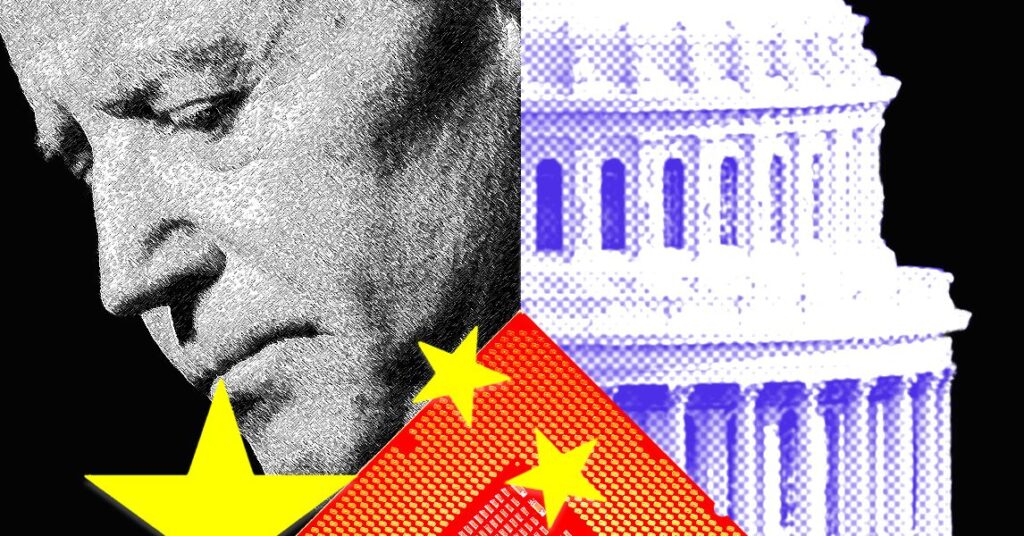Then there were the specifics. How would the policy distinguish between equipment that really posed a risk, and products companies should still be able to sell? Estevez says he remembers the White House pushed for restrictions on a larger number of items, while the Commerce Department, which is responsible for promoting economic growth, sought a more tailored approach. “Trying to hold China back is a fool’s errand,” Raimondo, the commerce secretary, told The Wall Street Journal toward the end of Biden’s term, describing export controls as mere “speed bumps” for China.
Yet the administration kept plowing forward. Several former officials specifically cited Chhabra’s bureaucratic skill and determination as central to making the chip strategy happen. “American technology should not enable adversaries to build AI capabilities that will be turned against American troops, strategic assets, and critical infrastructure,” says Chhabra, now out of government and leading national security policy at Anthropic. “Strong export controls are essential for America’s national security and AI dominance.”
It’s not unusual for a group of scholars with a bold new vision for policy to join the government, but it’s far less common for their ideas to be put swiftly into action. “Look, Tarun and I argued all the time,” says Estevez, but “moving in the same direction was not the issue.” At least among this group of staffers, the core dispute wasn’t over whether they should try to constrain China, but over how—broad restrictions versus targeted measures that preserved more flexibility for industry.
Finding that balance has been a moving target. After the first round of controls in October 2022, the Biden administration decided it needed to further tighten restrictions. Officials had already banned Nvidia from selling its best AI training chip to China, but the company then developed a new, China-specific chip with capabilities that pushed right up to the limits of the existing rules. In October 2023 and December 2024, the Biden administration tightened the controls on both chips and chipmaking equipment to plug what were perceived as unintentional loopholes.
To make any of this stick, however, the Biden administration first needed help from Japan and the Netherlands. Keeping advanced chips out of the Chinese market was a relatively discrete task, targeting just a few products. Undermining Chinese efforts to build cutting-edge chips of their own, on the other hand, was a multinational endeavor. That’s because semiconductor fabrication relies on precision machinery and software from around the world, with particularly crucial inputs coming from the Dutch company ASML and Japanese companies such as Tokyo Electron. If the United States banned its equipment suppliers from selling to China, but Japan and the Netherlands kept selling, US businesses would lose revenue, and China would still be able to upgrade its domestic manufacturing.
The Biden administration had sought Japanese and Dutch cooperation at the outset, but there was no quick agreement. So the White House decided to go it alone and announced the 2022 controls before the allies signed on, knowing full well that the move would hurt US companies. The Biden administration then had to convince Tokyo and Amsterdam that joining the effort was worth losing some exports and risking Chinese retaliation. After decades at the Defense Department, Estevez was well aware that AI represented the future of warfare, he says. Whether or not an AI inflection point was coming, he knew military planners would still prefer to face a Chinese adversary that was lagging behind technologically. This idea seemed to also carry weight with allied officials. “The sales pitch to the Dutch and the Japanese was: Artificial intelligence is the future,” says Estevez. “And they bought that.”
